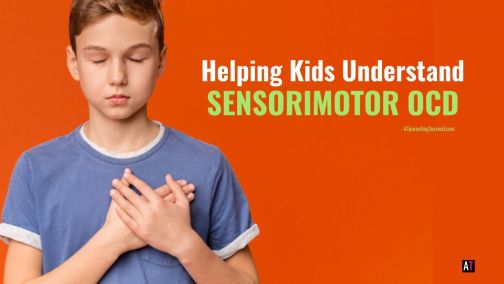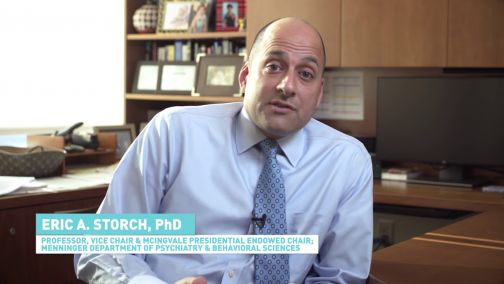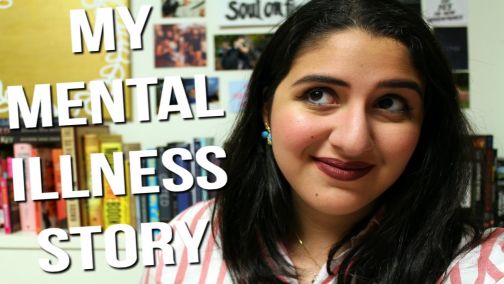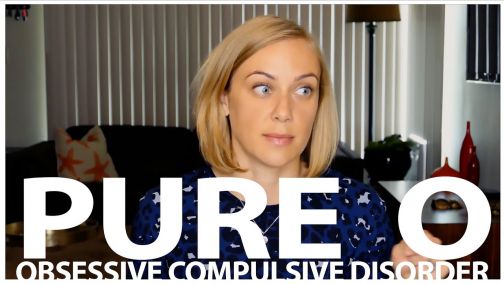Living with Somatic OCD

What’s going on?
A less common subset of OCD, Somatic OCD, is focused on neutral obsessions. Neutral obsessions are ones that involve a thought or image that has no dangerous or negative impact. For instance, harm thoughts are not neutral obsessions because the anxiety is related to a dangerous act. Somatic means “relating to the body.” Therefore, Somatic OCD obsessions involve the awareness of your own bodily functions like swallowing, breathing and blinking. You can also be hyper-aware of background noise, like someone else’s chewing.

Dr. Phillipson Talks Science, Symptoms & Treatment of OCD
Common Somatic OCD obsessions:
- Constantly being aware of your common bodily functions.
- Fear that you’ll never stop noticing your common bodily functions.
- Constantly being aware of other people’s bodily functions.
Common Somatic OCD compulsions:
- Create distractions: You put in a great deal of effort to create distractions so you’re not aware of your natural functions.
- Frustration: You’re frustrated over paying so much attention to naturally occurring functions.
- Hyper awareness: Pressure for life to exist without the awareness of natural functions.
Common misconceptions about Somatic OCD:
- OCD only comes in one, general type. Subsets like Somatic OCD don’t exist.
- The idea that you shouldn’t be aware of your own bodily functions.
- The associations that you make are totally legitimate.
Related Reading
- 8 Signs That You Might Have Somatic OCD
- How to Find a Pure OCD Expert
- Pure O: An Exploration into a Lesser-known Form of OCD
- Intrusive Thoughts, Pure O and More with Dr. Steven Phillipson, PH.D.
- Characterizing Pure O
- Let's Talk OCD: Rose Cartwright's Movement towards Pure O Acceptance
- Are Intrusive Thoughts Normal?
- What Are Intrusive Thoughts?
How Do I Know it’s OCD?
Everyone gets intrusive thoughts, but having them doesn’t mean you have OCD. For people who do have OCD, these thoughts can be debilitating, causing extreme anxiety and discomfort. No matter how hard you try to get rid of them, they won’t go away. Once you become hyper-aware of your functions, the idea of “never-ending” or “foreverness” becomes too much to handle. Somatic OCD is referred to as “neutral” obsessions because, unlike the classic OCD condition, there’s not a risk or fear component.
Examples of Somatic OCD:
- You hear loud background noises. To silence the background noise, you pop your earbuds in and turn up the music way too high. This actually makes you more fragile and more sensitive to the awarenesses.
- Someone who you really like asks you out on a dinner date. You decline because you’re too afraid to become fixated on that person’s chewing.
- You know breathing is a natural part of living. Yet you can’t seem to take your mind off of your own breathing. You focus on every inhale and exhale, and it becomes incredibly distracting.
How can my family help with my Somatic OCD?
Family members and friends must remember to be open minded and supportive. Sharing these obsessions can be very anxiety inducing for sufferers. However, it’s important to not provide reassurance. Doing so can make things worse. Instead, they should invite you make room for these distractions and help you find acceptance.
Is Recovery Possible for Me?
Yes! People with Somatic OCD can get much better through Exposure Response Prevention Therapy (ERP). ERP is when you voluntarily expose yourself to the source of your fear over and over and over again, without acting out any compulsion to neutralize or stop the fear. By repeatedly facing something you’re afraid of, you force your brain to recognize how irrational it is.
Examples of ERP treatment:
- You may be asked to acknowledge the function that gives you the most distress, like swallowing, breathing, blinking, loud noises, etc.
- You may be asked to sit with someone else and observe their chewing, swallowing, breathing, blinking, etc.
There are other treatment options as well. Mindfulness-based Cognitive Behavioral Therapy, also known as CBT, teaches people to identify, understand and change negative thinking patterns and behaviors. Patients are taught problem-solving skills during therapy lessons and then instructed to practice them on their own time in order to build positive habits.
Can medication help?
Medication can help alongside ERP, but it shouldn’t replace it. Doctors should always be consulted before considering medicinal options.
The main family of medicines used to treat OCD are known as Selective Serotonin Reuptake Inhibitors, or SSRIs. SSRIs enhance your natural serotonin activity and are used to treat major depressive disorders and anxiety conditions. Examples include Lexapro, Prozac, Paxil and Zoloft.
What is the goal of therapy?
Some people with Somatic OCD recover completely through ERP. But for many, their obsessions never fully go away. OCD recovery has more to do with managing the condition, than it does with eliminating it. However, that doesn’t mean you can’t lead a healthy, happy life. By prioritizing treatment and positive lifestyle habits, sufferers often gain confidence and freedom. Even if some anxiety is still present by the end of therapy, you’ll no longer feel debilitated by the condition.
If you suffer from OCD, you have a severe anxiety disorder. But it can be treated. Start by getting educated and making healthy living choices. Then find a clinical psychologist in your area who specializes in OCD and Exposure Response Prevention (ERP).
From the Community
Support our work
We’re on a mission to change how the world perceives mental health.





